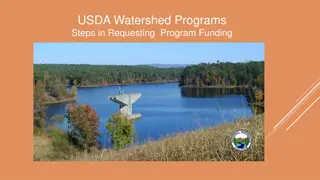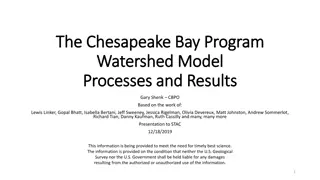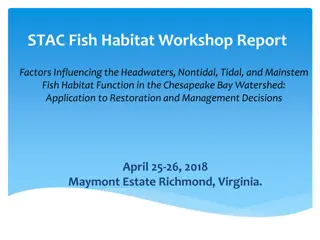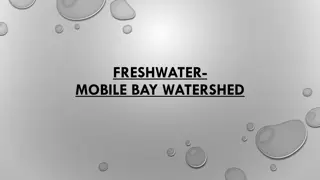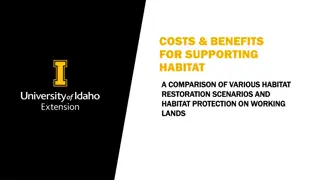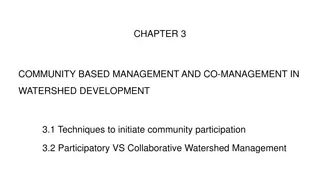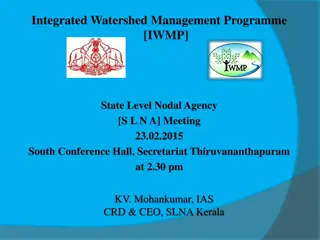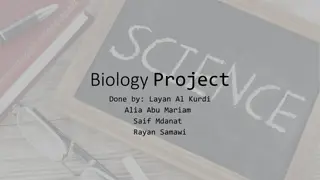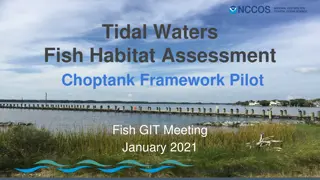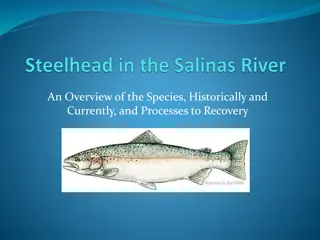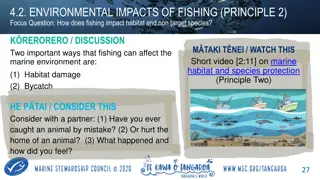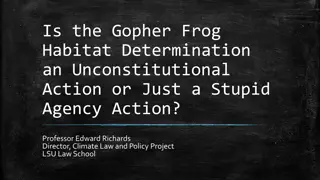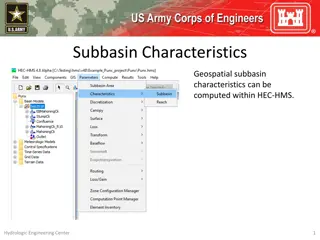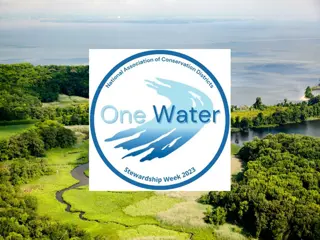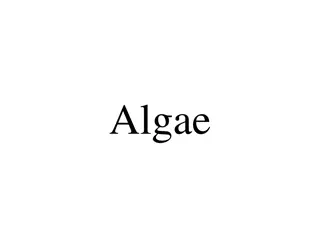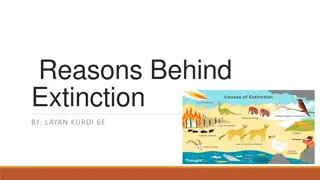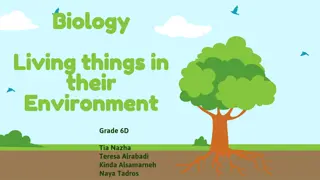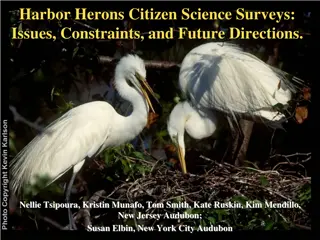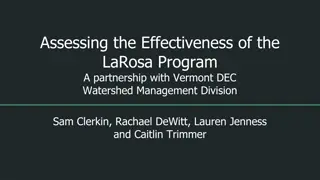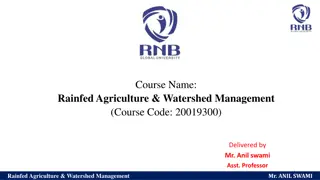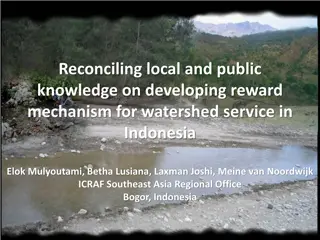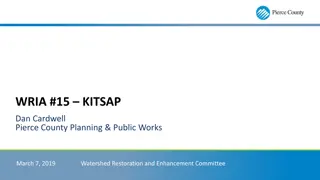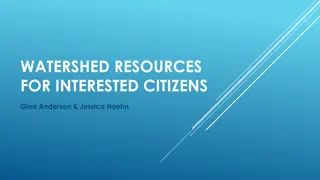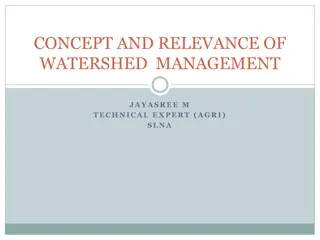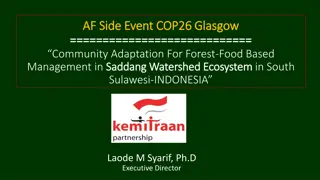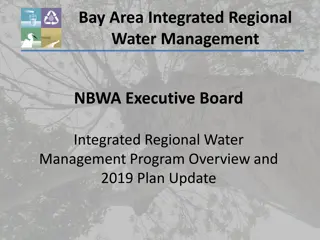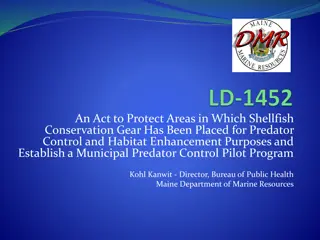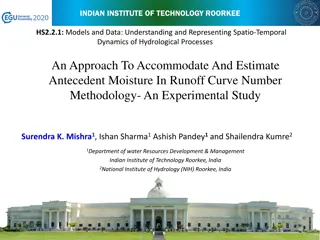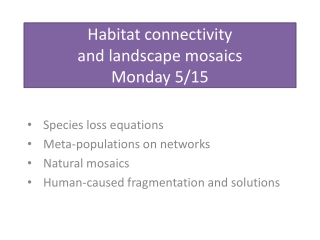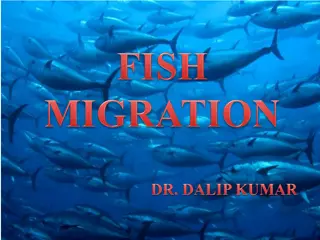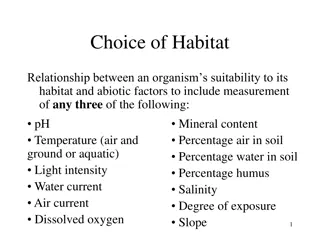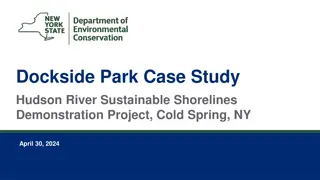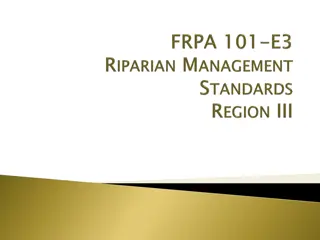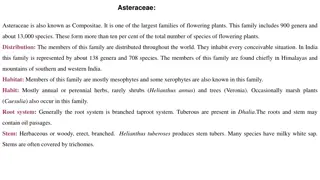Understanding Watershed Processes and Habitat Impact
Explore the intricate relationship between stream processes, watershed factors, and habitat effects on local wildlife. Learn how climate, geology, soil, vegetation, water, and land use play crucial roles in shaping ecosystems. Discover the importance of maintaining a healthy vegetative community for optimal watershed function and the implications of human alterations on ecosystem degradation. Restoration efforts may be necessary to facilitate watershed recovery when natural balance is disrupted.
Download Presentation

Please find below an Image/Link to download the presentation.
The content on the website is provided AS IS for your information and personal use only. It may not be sold, licensed, or shared on other websites without obtaining consent from the author. Download presentation by click this link. If you encounter any issues during the download, it is possible that the publisher has removed the file from their server.
E N D
Presentation Transcript
Stream Processes and Habitat Ryan Johnson
Overview Watershed Processes Factors and their effects on the watershed as a whole Stream Processes Factors controlling individual stream dynamics Stream Habitat How these processes affect local wildlife
Factors Climate & Geology Control ecosystem components Three basic components Soil Vegetation Water
Soil Stores and provides water for stream Primary source of streamflow Storage factors Depth & Texture Delivery rate factors Slope, Texture, and Structure
Vegetation Provides resistance to erosion throughout watershed Prevents oversaturation of soil Protects from splash erosion
Water How much water is the watershed receiving? Climate Time of year
Land Use If human activity substantially differs from natural disturbance regime: Causes substantial alteration Any alteration of three basic components will affect the watershed Removal of vegetation (farming/logging) Compaction of soil (road building) Diversion of water (irrigation) Alterations tend to accelerate over time
Disturbances Ecosystems evolve according to disturbance cycle i.e. floods Large & small scale Critical to function of ecosystem Resets the successional clock Creates complexity in ecosystem
Healthy vegetative community = Healthy watershed function
What does it all mean? If alterations of the watershed go beyond the system s ability to resist or recover from them, ecosystem degradation will occur. At that point, restoration efforts are required to stimulate recovery of the watershed.
What does a river want to do? Adjust towards an equilibrium Balance of energy in and energy out Balance of deposition and erosion
Factors What determines stream morphology? Energy Water Sediment Structural Elements
River Types Non-alluvial Controlled by bedrock Very stable and resistant to change Not our concern Alluvial Controlled by sediment stored by river Presence of floodplains Likes to misbehave
River Forms Single Channel Straight or meandering Braided Stream Frequent avulsion Stable, vegetated islands or unstable bars Caused by: Steep Gradient Abundant coarse bedload and/or wood supply
Stream Dynamics Gravity Energy A stream must disperse this energy: Friction within channel Bank stability from vegetation Turbulence from channel form Sediment transport Balanced flow & sediment load Creates a complex, and unique, channel geometry
Flooding A way to relieve excess energy from the stream system Restricting flood flows (via dikes or dredging) forces energy to be contained in the stream channel Excess erosion and stream degradation will occur
Avulsion A natural process that can be accelerated by human activity Chute-cutoff is most common Cuts off meanders that can t effectively transport sediment Creates oxbow lakes Energy of flood flow > resistance of floodplain Devegetation & decreased channel capacity
Hyporheic Zone Area where ground & surface water mix Effective in coarse-grained sediment and sufficient stream gradient Increase in fine-grained sediment can seal pores Downwelling & Upwelling Zone Water table below or above stream Severe downwelling can t support riparian vegetation
Large Wood Captures and retains sediment Lowers stream gradient Protects the bank from erosion General dispersion of stream energy Removal from stream can lead to quick erosion of bed down to bedrock One of the most destructive practices In arid regions, beaver dams can serve the same purpose
Disturbances Serves similar purpose as on watersheds Potential to mechanically alter stream channels Stream must undergo period of recovery Reestablish equilibrium
Threshold of Stability Until reached: Small changes cause small responses by the system Once reached: Small changes cause major changes in the system Good indicator of stream degradation
Degradation Generally plain morphology and methods of energy dissipation High surface resistance with excessive erosion/deposition Unbalanced sediment transport Channel downcutting
Connectivity Some species need to migrate Continuous habitat and migration corridors are essential Loss of connectivity due to degradation often results in local extinction
Diversity Lots of features = biotic diversity Covers needs of many species Frequency and magnitude of floods primary driver of complexity Moderate levels of disturbances Maintains complex habitat Allows coexistence of species with superior competitors


